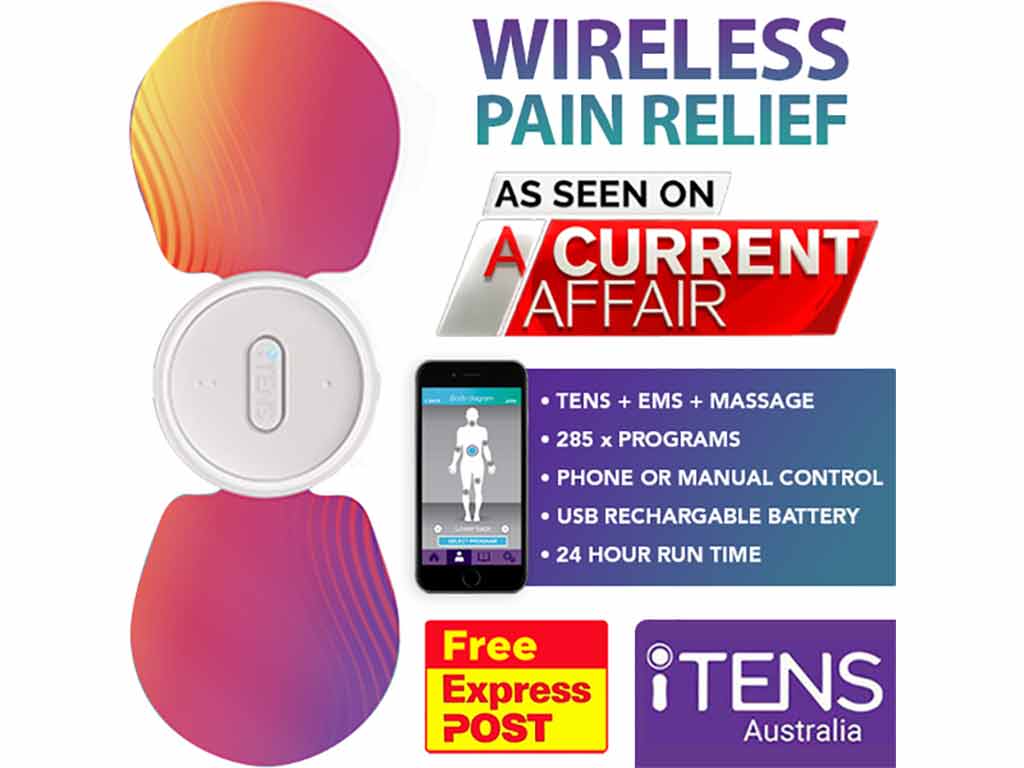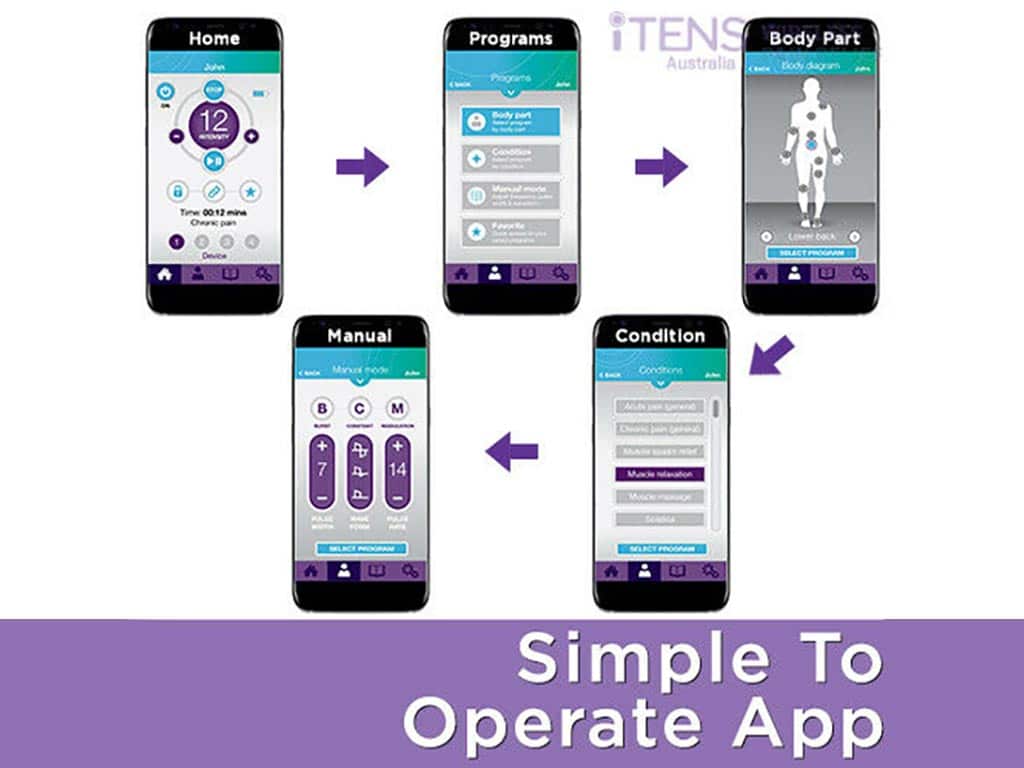
Transcutaneous Electrical Nerve Stimulation (TENS) therapy is a method of pain relief for various pain conditions. These include musculoskeletal pain, neuropathic pain, postoperative pain, and among others. A TENS unit for occipital neuralgia works by delivering small electrical pulses to the nerves in the affected area. It helps to disrupt the pain signals sent to the brain. TENS can also trigger the release of endorphins, which are natural painkillers that the body produces.
Many individuals choose to rely on pain medications to alleviate occipital neuralgia due to their accessibility and affordability. However, there may be situations where medications are not sufficient. Oral painkillers carry the potential risk of developing adverse side effects with long-term use. Alternatively, using a TENS machine is a popular pain management method that is all-natural and toxic-free. This article will present what a TENS device for occipital neuralgia is, including its mechanism of action and correct usage.
What Is a TENS Unit for Occipital Neuralgia?
Occipital neuralgia is a neuropathic pain condition that causes sharp, shooting pain in the back of the head, neck, and behind the eyes. Irritation or injury to the occipital nerves causes it. These nerves run from the top of the spinal cord to the scalp. Additionally, poor posture, neck tension, or trauma to the head or neck can trigger occipital nerve neuralgia.
A TENS unit for occipital neuralgia is a portable device that can provide pain relief. It consists of a control unit and sets of electrodes. The adhesive electrode pads send low-voltage electrical currents to stimulate the nearby nerves to reduce pain. Moreover, there are two types of TENS devices that individuals can use: standard and wireless.
A standard TENS machine has a handheld push-button remote and wires connecting to the electrode pads. On the other hand, a wireless TENS machine utilises Bluetooth technology to connect to a smartphone app. It is popular among individuals who prefer convenient and on-the-go pain management. Nevertheless, both types deliver adequate electrical stimulation to relieve acute or chronic pain conditions.
Prevalence and Impact of Occipital Neuralgia on Daily Life
- Occipital neuralgia causes recurrent headaches, disrupting daily activities.
- Individuals may experience difficulty in turning their heads or performing routine tasks due to the pain.
- The condition can lead to sleep disturbances, affecting the overall quality of rest.
- Chronic migraines can hinder concentration and productivity at work.
- It can lead to emotional strain, causing stress and affecting overall mood and well-being.
- The condition may lead to reduced social interactions as individuals may avoid gatherings or events to manage their occipital pain sensation.
- Those with occipital nerve neuralgia may rely on pain medications or medical therapies for pain reduction, creating a dependency.

How Do TENS Units for Occipital Neuralgia Work?
TENS units for occipital neuralgia work by using a pulse generator to send electrical impulses to the nerves in the neck and scalp. These impulses stimulate the nerves, triggering the release of endorphins, which are the natural painkillers of the body. Endorphins help alleviate pain by modulating pain perception and providing a sense of relief.
The Gate Control theory of Pain is also a key factor. This theory suggests that nerve fibres in the spinal cord act as “gates” and control the transmission of pain signals. When external stimuli like mild electricity are provided, these neural gates restrict the pain signals travelling to the brain.
Furthermore, occipital nerve stimulation using TENS can help boost blood circulation in the affected areas, promoting healing and reducing inflammation. By targeting the peripheral nerves and improving blood flow, TENS units can be effective treatments for occipital nerve neuralgia. People may use these units as part of their treatment programs to achieve complete relief. It is important to consult a pain specialist before starting a new therapy.
Understanding Pain Signals
Pain signals are like messengers that alert the body when something is wrong. When a person experiences an injury or damage, special nerve endings called nociceptors send signals to the brain. These signals travel through the spinal cord, acting like urgent messages to inform the brain about the problem.
The process involves chemical substances, too. When tissues are damaged, they release molecules that activate the nociceptors. This sets off a chain reaction, sending signals to the brain, which interprets them as pain. Essentially, pain signals serve as a crucial alarm system for the body, ensuring that it reacts promptly to potential threats or adverse events.

How to Use a TENS Unit for Occipital Neuralgia
To use a TENS unit for occipital neuralgia, first, it is important to set the device to deliver a minimal current to the affected area. This ensures that the stimulation is not too intense, which can cause discomfort. The TENS unit functions as a stimulator for pain relief by delivering neural stimulation to the occipital area.
Next, the user can select from different treatment programs on the TENS unit that are designed for different types of pain. They can adjust the pulse duration, amplitude, and rate to find the settings that work best for their occipital pain. It is recommended to start with a low intensity and gradually increase it as needed.
The typical duration of stimulation for pain relief is 20-30 minutes. When the session is complete, turn off the electrical nerve stimulator and remove the electrode pads. However, those with heart disease, epilepsy, or pregnant women should exercise extra caution. They should consult a pain specialist for proper medical treatment, as TENS may have potential contraindications.
Electrode Pad Placement
The user has to begin by cleaning the treatment area with soap and water. They should thoroughly dry the skin to ensure proper adhesion of the electrodes. Using an alcohol wipe is also recommended to remove any oils or dirt that may prevent the electrodes from sticking effectively.
After skin preparation, the electrodes should be placed at the base of the skull, on either side of the neck. This positioning allows for the electrical impulses from the pulse generator to travel through electrodes and stimulate the occipital nerves. Additionally, keep the electrodes a few inches apart to ensure the electrical stimulation covers the painful area.
Conclusion
TENS units for occipital neuralgia offer relief by sending gentle electrical pulses to nerves in the neck and scalp. This stimulation prompts the release of endorphins, while the Gate Control theory helps block pain signals. TENS units also enhance blood circulation, aiding in healing and reducing inflammation. Whether opting for the standard or wireless type, individuals can conveniently manage pain on the go. Consulting a pain specialist before starting TENS therapy is crucial for a comprehensive treatment plan.
When using a TENS machine for occipital neuralgia, one should set the device to a gentle current to avoid discomfort. Selecting appropriate treatment programs and adjusting pulse duration is vital, starting with low intensity and gradually increasing. A 20-30 minute session is typical, followed by careful removal of electrode pads. Before using TENS, individuals with heart conditions, epilepsy, or pregnancy should consult a specialist due to potential contraindications.







